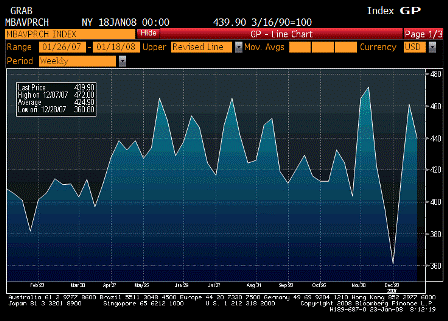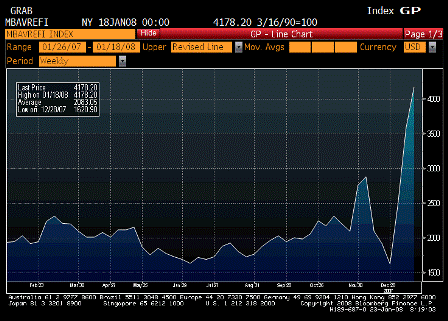Right, the financial press will chop the Fed to ribbons if inflation continues higher, as I expect it will.
But Bernanke is setting the stage for an even bigger recession down the road. Just as the ultra-low rates of the early 2000s created many of the problems we’re experiencing today, pumping money into the system would probably stoke inflation, forcing the Fed to hike rates sharply in the near future. “It’s better to take a small recession and kill inflation immediately instead of facing high inflation and a really big recession later,” says Carnegie Mellon economist Allan Meltzer.
That’s the orthodox mainstream view. They are already starting to turn on Bernanke and his reinvention of monetary policy.
Meltzer, who is finishing the second volume of his history of the Federal Reserve, warns that Bernanke is risking a disastrous replay of the 1970s, when high oil prices fueled double-digit inflation. Every time the Fed started to tighten and unemployment jumped, chairmen G. William Miller and Arthur Burns lost their nerve. They lowered rates to boost job growth, and inflation inevitably revived, causing a vicious price spiral. The Fed let the disease rage for so long that it took draconian action by chairman Paul Volcker in the early 1980s to finally defeat inflation. The price was a deep recession, with unemployment hitting 11% in 1982. “The mentality is the same as in the 1970s,” says Meltzer. “‘As soon as we get rid of the risk of recession, we’ll do something about inflation.’ But that comes too late.”
Yes, that’s the mainstream story (not mine, of course) and likely to get a lot louder, and if inflation picks up, it could cost Bernanke his job.
Indeed, while the economy is sending mixed messages about growth, the signs of increasing inflation are flashing bright red. For 2007 the consumer price index rose 4.1%, the biggest annual increase in 17 years. Gold, historically a reliable harbinger of inflation, set an all-time high of more than $900 an ounce. The dollar is languishing at a record low against the euro and a weighted basket of international currencies. “Flooding the market with liquidity is a disaster for the purchasing power of the dollar,” says David Gitlitz, chief economist for Trend Macrolytics.
And the Fed knows this. And they know they are ‘way out of bounds’ of mainstream theory with current policy, including encouraging a fiscal package.
The Fed’s supporters tend to downplay those dangers. They contend that the inflation surge is being driven largely by energy costs. Since oil isn’t likely to rise from its near-$100 level, inflation is likely to tail off in 2008. “That argument is wrong,” says Brian Wesbury, chief economist with First Trust Portfolios, an asset-management firm. “As people spend less to drive to the golf course, they will spend the extra money on golf clubs or other products. The Fed wants to reflate the economy, so the money that went into higher oil prices will drive up the prices of other goods.”
That’s the mainstream story, and it’s lose/lose for the Fed.
Fed supporters also point out that the yield on ten-year Treasury bonds stands at just 3.8%, a figure that implies that investors expect inflation to be around 2% in future years. So if inflation is really expected to rage, why aren’t interest rates far higher? The explanation is twofold. First, government bonds are hardly a foolproof forecaster. For example, five years ago Treasury yields were predicting 2% inflation over the next five years, and the actual figure was 3%, or 50% higher.
Another point the mainstream will make: Fed foolishly relied on its forecasting models and ignored the obvious signs of inflation.
Second, investors are so skittish about most stocks and corporate bonds that they’re paying a huge premium for safe investments, chiefly U.S. Treasuries. “It’s all about a flight to safety,” says Meltzer. Stand by for a major rise in yields as the reality of looming inflation sinks in.
So what is the right course for the Fed? Bernanke should hold the Fed funds rate exactly where it is now, at 4.25%. Standing pat might well push the economy into a recession. But the Fed’s newfound vigilance on inflation would boost the dollar, effectively lowering the prices of oil and other imports. America would suffer a short downturn and restore price stability, paving the way to a strong recovery in 2010 or 2011.
Sadly, the Fed has already chosen sides. It’s likely to lower rates every time growth slows or joblessness rises. As a result, it will never tame inflation until it becomes a clawing, bellowing threat. Then we’ll have to suffer a real recession, the kind we suffered in the aftermath of a time we should study and shouldn’t forget – the 1970s.
Says it all.
Hard to say why the Fed hasn’t played it that way, but they haven’t and will pay the price if inflation keeps rising.
♥


